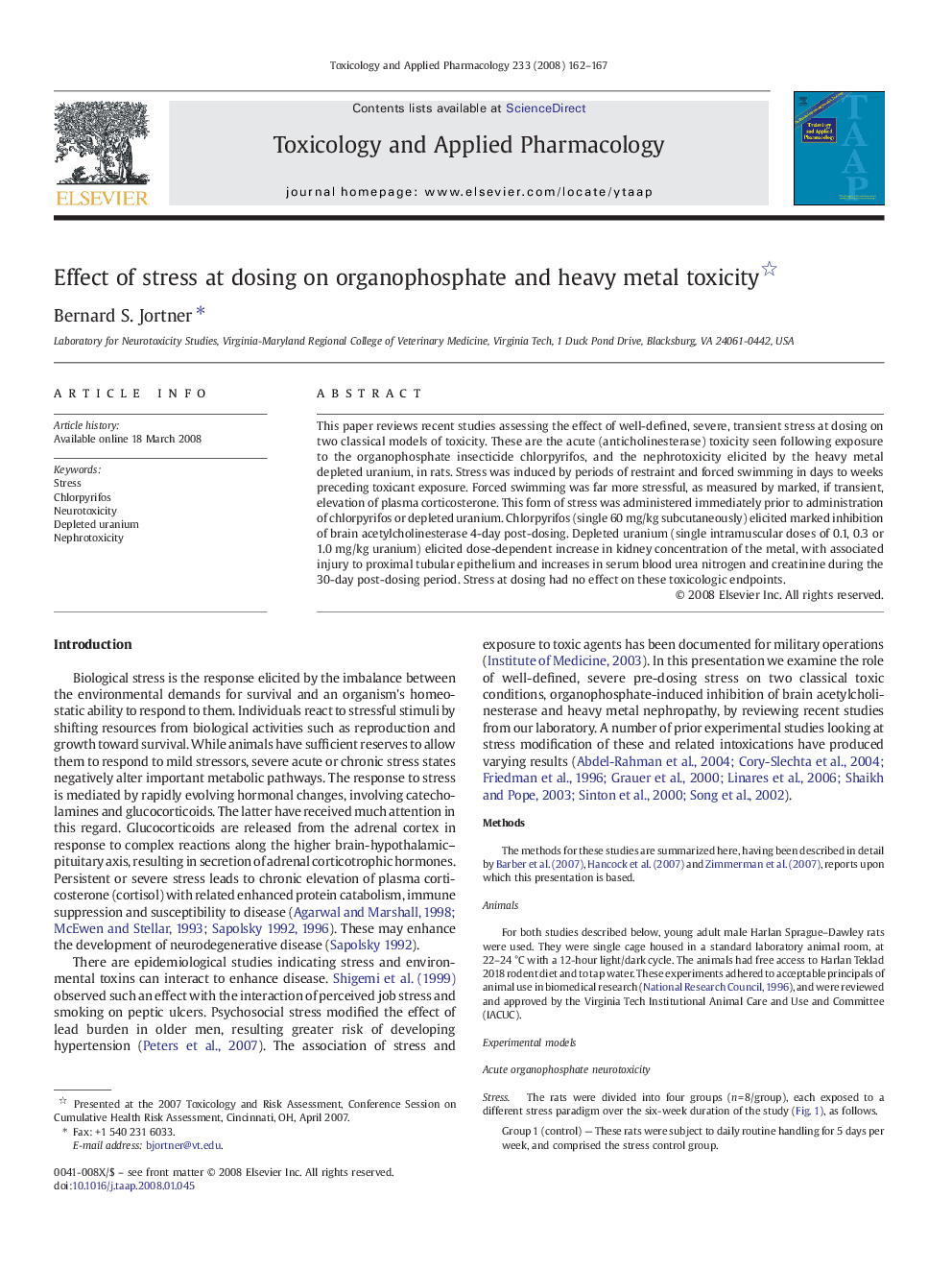| Article ID | Journal | Published Year | Pages | File Type |
|---|---|---|---|---|
| 2570946 | Toxicology and Applied Pharmacology | 2008 | 6 Pages |
This paper reviews recent studies assessing the effect of well-defined, severe, transient stress at dosing on two classical models of toxicity. These are the acute (anticholinesterase) toxicity seen following exposure to the organophosphate insecticide chlorpyrifos, and the nephrotoxicity elicited by the heavy metal depleted uranium, in rats. Stress was induced by periods of restraint and forced swimming in days to weeks preceding toxicant exposure. Forced swimming was far more stressful, as measured by marked, if transient, elevation of plasma corticosterone. This form of stress was administered immediately prior to administration of chlorpyrifos or depleted uranium. Chlorpyrifos (single 60 mg/kg subcutaneously) elicited marked inhibition of brain acetylcholinesterase 4-day post-dosing. Depleted uranium (single intramuscular doses of 0.1, 0.3 or 1.0 mg/kg uranium) elicited dose-dependent increase in kidney concentration of the metal, with associated injury to proximal tubular epithelium and increases in serum blood urea nitrogen and creatinine during the 30-day post-dosing period. Stress at dosing had no effect on these toxicologic endpoints.
